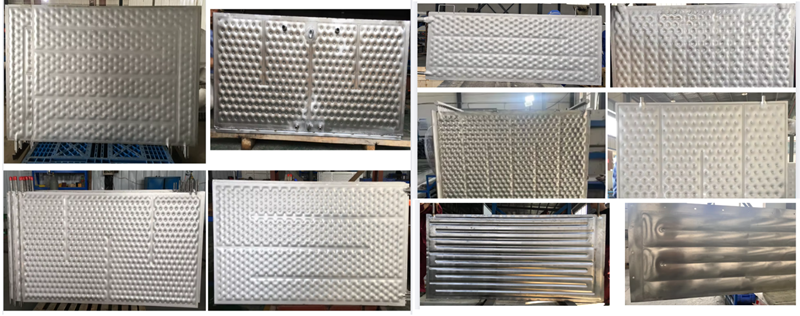发布时间: 人气:0 来源:chinapillowplate
How to Optimize Pillow Plate Heat Exchanger Design for High-Viscosity and Fouling-Prone Fluids?

In the field of industrial heat exchange, Pillow Plate Heat Exchangers are highly regarded for their efficient thermal conductivity and flexible design. However, when dealing with high-viscosity and fouling-prone fluids, optimizing the design to ensure long-term stable operation becomes a critical concern for many customers. This article delves into design strategies tailored for such fluids, helping you better understand and apply Pillow Plate Heat Exchangers in challenging conditions.
1. Understanding High-Viscosity and Fouling-Prone Fluids
High-viscosity fluids create significant resistance during flow, reducing heat transfer efficiency. Fouling-prone fluids, on the other hand, form deposits on heat exchange surfaces, further impairing performance. Therefore, when designing a Pillow Plate Heat Exchanger, it is essential to account for these characteristics and implement appropriate optimization measures.
2. Optimizing Flow Channel Design
2.1 Increasing Channel Width
For high-viscosity fluids, widening the flow channels can reduce flow resistance and improve fluid throughput. Wider channels also help minimize fouling, as the lower flow velocity reduces the likelihood of deposits adhering to the heat exchange surfaces.
2.2 Incorporating Wavy Channels
Wavy channel designs enhance turbulence, which improves heat transfer efficiency. For high-viscosity fluids, turbulence helps disrupt the boundary layer, enhancing thermal conductivity. Additionally, wavy channels reduce fouling by promoting surface scouring, preventing deposit buildup.

3. Selecting the Right Materials
3.1 Corrosion-Resistant Materials
Fouling-prone fluids are often corrosive, making the choice of corrosion-resistant materials critical. Stainless steel, titanium alloys, and similar materials offer excellent corrosion resistance, extending the heat exchanger's lifespan.
3.2 Surface Treatment Technologies
Special surface treatments, such as polishing or coatings, can reduce fouling. For example, nano-coating technology creates a smooth protective layer on the heat exchange surface, preventing deposit adhesion.
4. Optimizing Operational Parameters
4.1 Controlling Flow Velocity
For high-viscosity fluids, increasing flow velocity can reduce resistance, but excessively high velocities may increase fouling risks. Therefore, it is crucial to identify an optimal flow range that balances heat transfer efficiency with fouling prevention.
4.2 Regular Cleaning
For fouling-prone fluids, regular cleaning is essential to maintain optimal performance. Chemical or mechanical cleaning methods can remove deposits from heat exchange surfaces, restoring heat transfer efficiency.
5. Conclusion
Designing a Pillow Plate Heat Exchanger for high-viscosity and fouling-prone fluids requires a holistic approach, considering flow channel design, material selection, and operational parameters. Through optimized design, you can not only enhance heat transfer efficiency but also extend the heat exchanger's service life and reduce maintenance costs. If you have further questions about Pillow Plate Heat Exchanger design and manufacturing, feel free to contact us. We are here to provide expert solutions tailored to your needs.
We are experts in the design and manufacturing of Pillow Plate Heat Exchangers, with extensive industry experience and technical expertise. No matter the challenge, we deliver customized solutions to ensure your heat exchange system operates efficiently and reliably. Contact here to get our technical support.

Anhui Yingchuang Laser Technology Co., Ltd. copyright technical support:ZOHENG